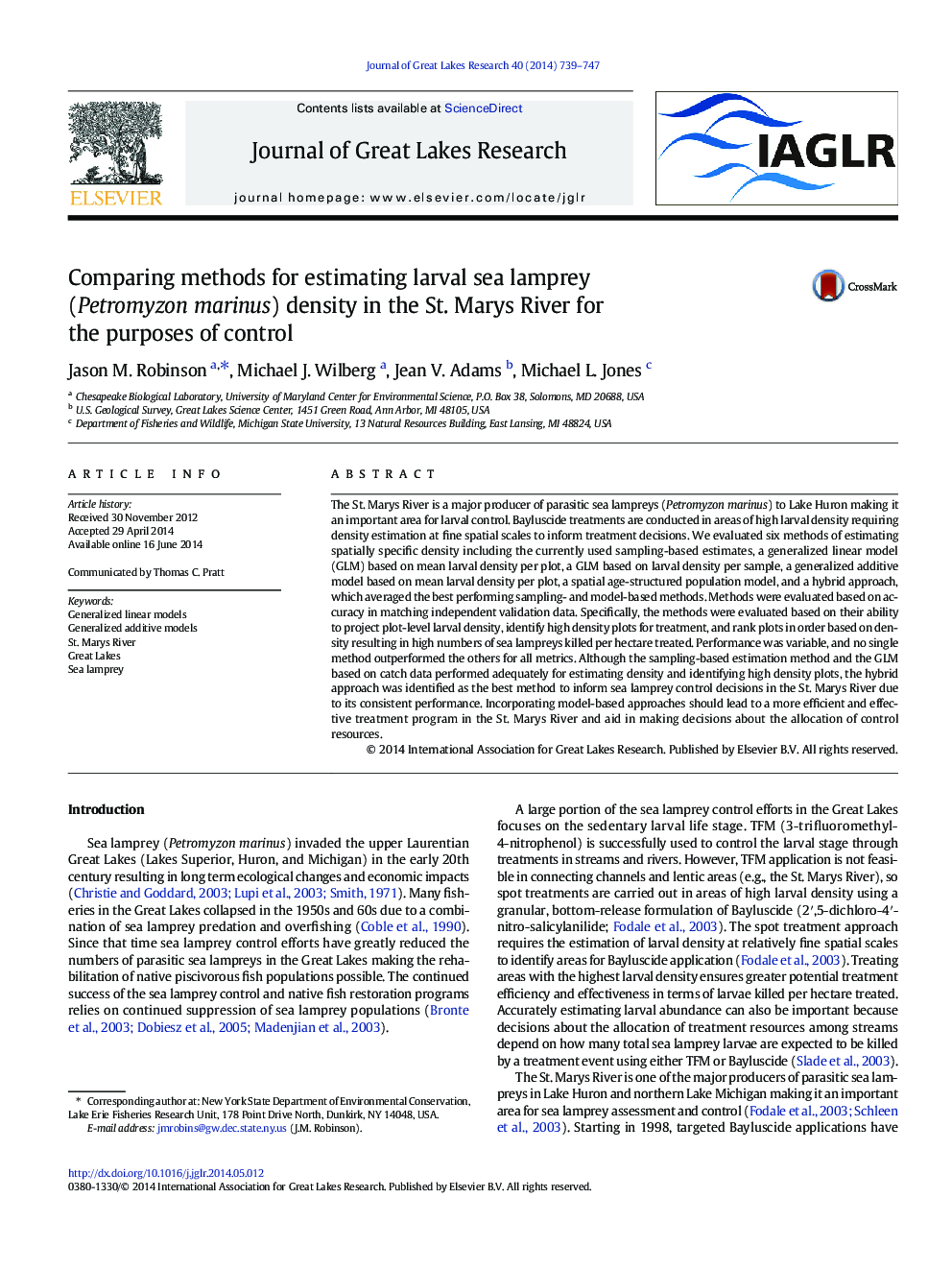| Article ID | Journal | Published Year | Pages | File Type |
|---|---|---|---|---|
| 6305322 | Journal of Great Lakes Research | 2014 | 9 Pages |
Abstract
The St. Marys River is a major producer of parasitic sea lampreys (Petromyzon marinus) to Lake Huron making it an important area for larval control. Bayluscide treatments are conducted in areas of high larval density requiring density estimation at fine spatial scales to inform treatment decisions. We evaluated six methods of estimating spatially specific density including the currently used sampling-based estimates, a generalized linear model (GLM) based on mean larval density per plot, a GLM based on larval density per sample, a generalized additive model based on mean larval density per plot, a spatial age-structured population model, and a hybrid approach, which averaged the best performing sampling- and model-based methods. Methods were evaluated based on accuracy in matching independent validation data. Specifically, the methods were evaluated based on their ability to project plot-level larval density, identify high density plots for treatment, and rank plots in order based on density resulting in high numbers of sea lampreys killed per hectare treated. Performance was variable, and no single method outperformed the others for all metrics. Although the sampling-based estimation method and the GLM based on catch data performed adequately for estimating density and identifying high density plots, the hybrid approach was identified as the best method to inform sea lamprey control decisions in the St. Marys River due to its consistent performance. Incorporating model-based approaches should lead to a more efficient and effective treatment program in the St. Marys River and aid in making decisions about the allocation of control resources.
Related Topics
Physical Sciences and Engineering
Earth and Planetary Sciences
Earth and Planetary Sciences (General)
Authors
Jason M. Robinson, Michael J. Wilberg, Jean V. Adams, Michael L. Jones,
